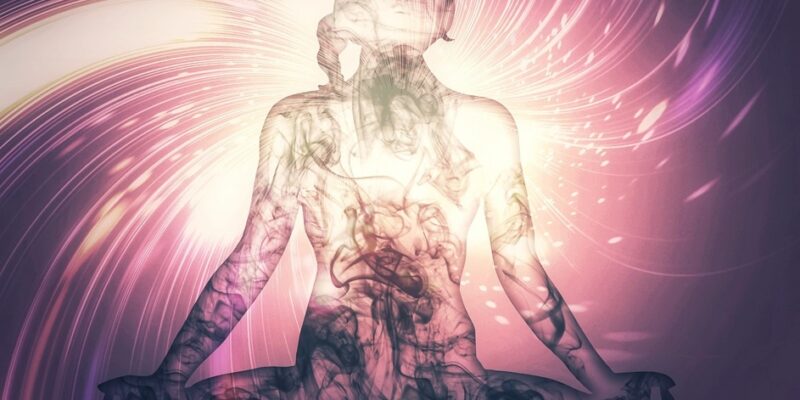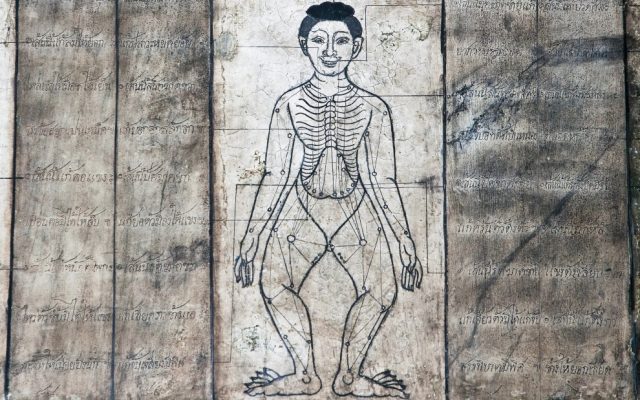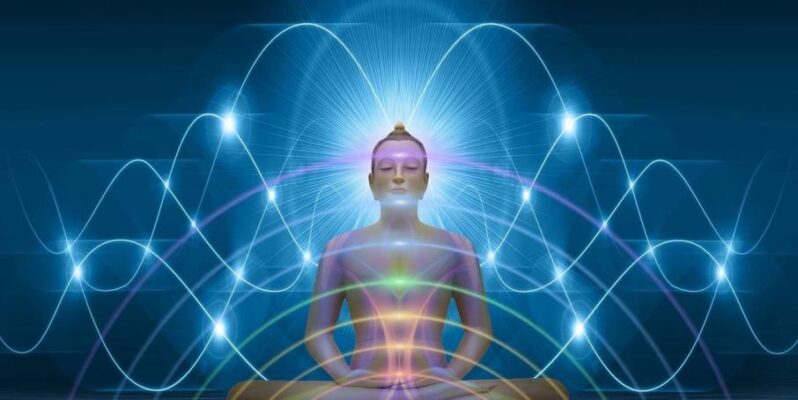
One of the questions with respect to the starting location of the Nadis — the Prana Energy Channels in Yoga — is if they start from/in the heart or in the navel area.
It’s a relevant question because the classical Yoga texts are not clear about this, that is, some sources claim that the Nadis start in the heart and others that they all commence in the navel area, the latter area usually called the Kanda.
Nadis Starting in the Kanda (Navel Area)
Let me give you some examples here below from classical texts that mention the navel (Kanda abdominal area) as the starting point:

“Above the genital organ and below the navel is Kanda of the shape of a bird’s egg. There arise from it Nadis, seventy-two thousand in number. Of these seventy-two are generally known.” (Dhyana-Bindu Upanishad)
“Nine digits above the genitals, there is Kanda of Nadis which revolves oval-shaped, four digits high and four digits broad. It is surrounded by fat, flesh, bone and blood. In it, is situated a Nadi-Chakra (wheel of nerves) having twelve spokes.” (Varaha Upanishad)
“Below the navel and above the male organ is the Kandayoni, shaped like the egg of a bird. There are the origins of the seventy-two thousand Nadis.” (Goraksha Shataka)
“The Chakra, resembling an egg of a hen, is located at the Muladhara, which is called Nadichakra, wherefrom the Nadis originate.” (Hatha-Ratnavali)
Nadis Starting in the Heart
And below some examples from ancient Indian texts that mention the heart as the starting point of the Nadis:
“There are 101 energy channels [Nadis] of the heart existing. One of them is directed to the skullcap. Through this one, reaching upwards, immortality [Amrita] can be achieved. All other channels are going to various directions — they are doors to death, exitus doorways.” (Chandogya Upanishad)
“The Self dwells in the lotus of the heart, whence radiate a hundred and one nerves [Nadis]. From each of these proceed one hundred others, which are smaller, and from each of these, again, seventy-two thousand others, which are smaller still.” (Prashna Upanishad)
“This Dahara lotus is blooming in many ways like a lily and like hair, so also the Nadis are placed in the heart.” (Subala Upanishad)
“Again when it becomes fast asleep — when it does not know anything — it comes back along the seventy-two thousand nerves [Nadis] called Hita, which extend from the heart to the whole body, and remains in the body.” (Brihadaranyaka Upanishad)
In Conclusion – Heart or Navel?
So, the question now is: who’s right? Well, first of all we need to understand that the concept of the Nadis evolved over time, an era that started at least around 500 BCE and stretches up to today. In a general sense, we can see that later texts on Yoga rather place the starting point of the Nadis in the Kanda (navel area) than in the heart.
Moreover, as a whole, we can also observe that there are more classical texts that mention the Kanda as the origination point of the Nadis, than Yoga texts that mention the heart.

Nevertheless, the question is if “the heart” — as mentioned in several texts — is really literally the heart as a physical organ. It often seems that the heart rather points to the “sacred heart,” “spiritual heart,” the “inner center,” or “spiritual center” of a human being.
Moreover, the heart, seen as center, could also refer to the abdominal region of the body — the Hara — an area that’s often seen — in the past and still today — as the “core” or indeed the “center of the body”. If this would apply, than “the heart” would even literally mean the abdominal area or Kanda.
An interesting note with regard to the above is that Master Hu Yaozhen (1887-1973), an influential Chinese Qigong practitioner, wrote in his book Qigong (published 1959) that the Middle Dantian (an important Taoist energy center, also called the Heart Center) is located behind the umbilicus (navel), and not near the physical heart as commonly is thought. This would confirm that “the heart” is “the center,” but not referring to the heart itself but to the abdominal area.
Another thing is that the word Nadi can also be used in the context of gross channels instead of subtle energy channels, that is, to blood vessels, nerves, lymphatic system, and so on. In this case, there’s something to say for “Nadis originating in the heart” in the sense of “blood vessels originating in the heart,” which would be understandable.
Nevertheless, in the examples of ancient texts I refer to, this is not very likely, because those texts are rather spiritual scriptures, partly about Yoga, and it’s clear from the context of these texts that they do not address the blood vessels.
All by all, it’s most likely not ever possible (or even needed) to come to a final verdict about this topic, but maybe the discussion above gives some extra — perhaps even interesting — food for thought.


















